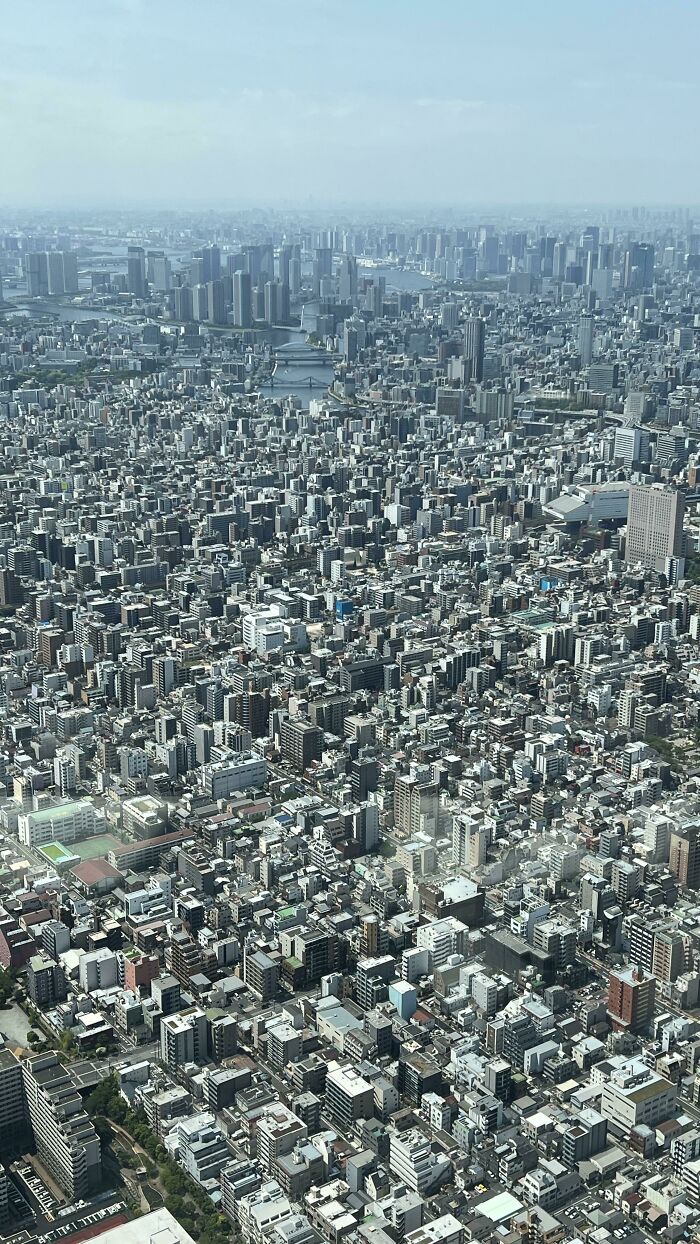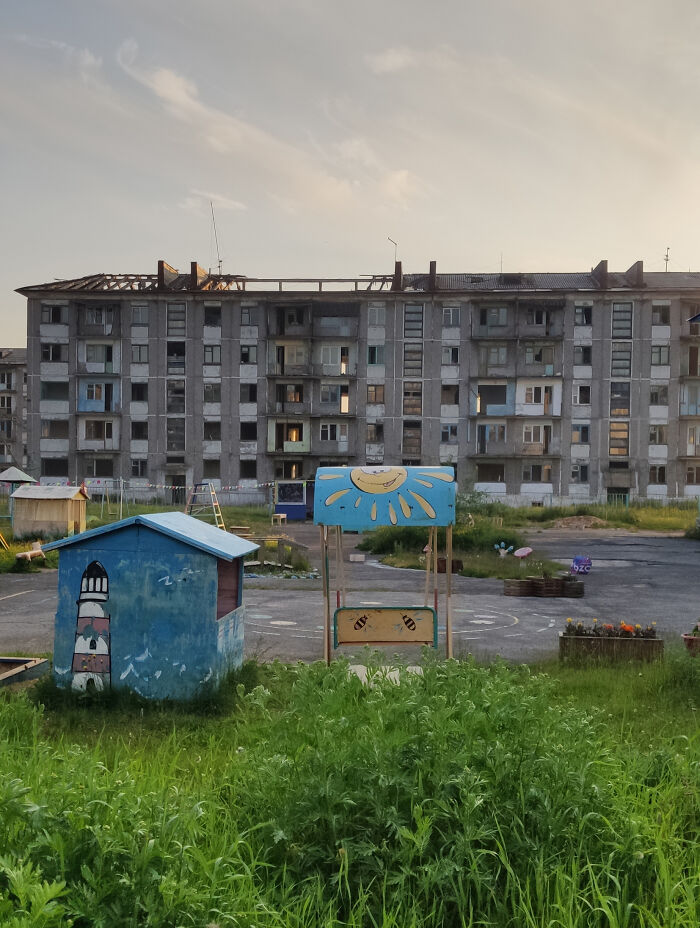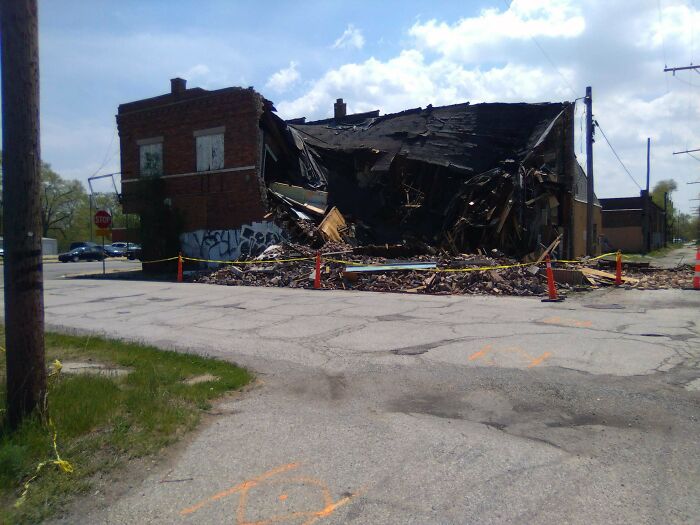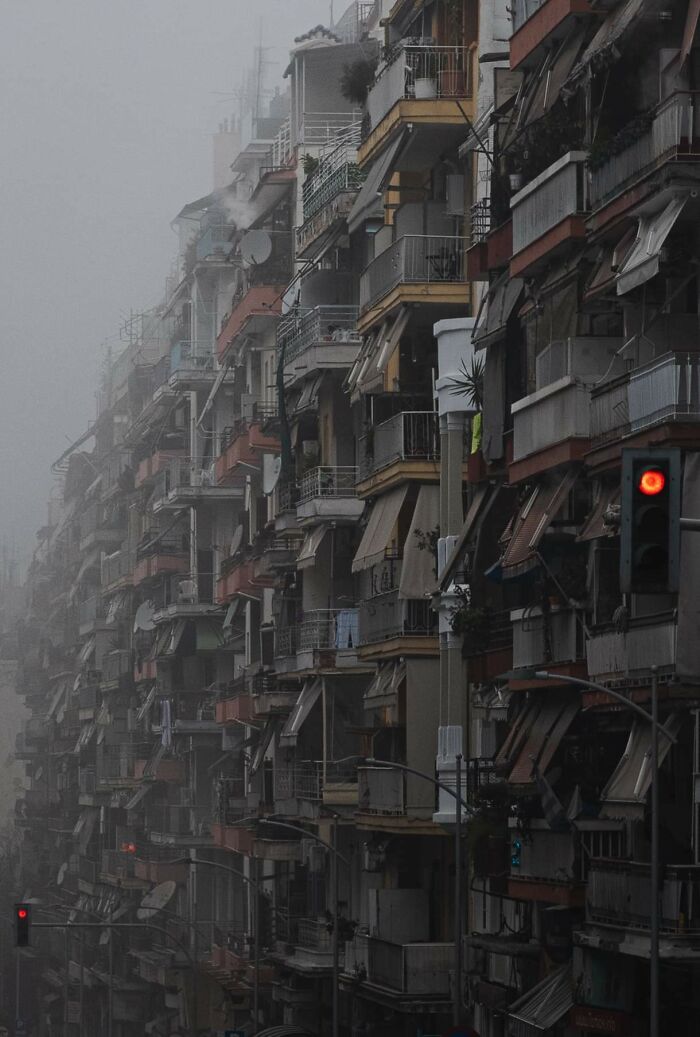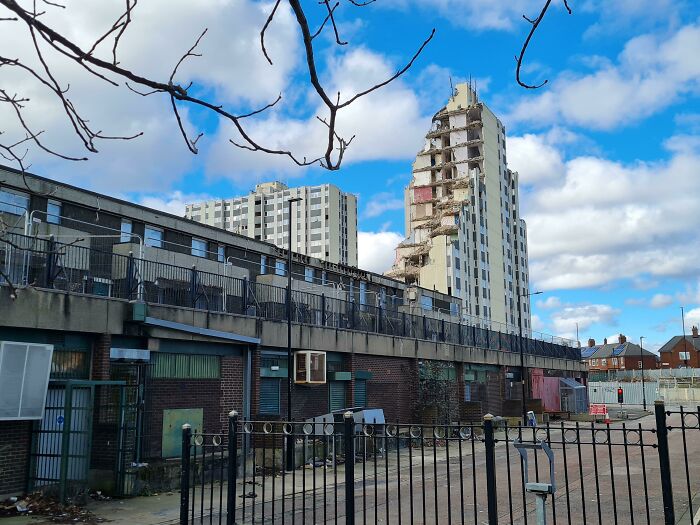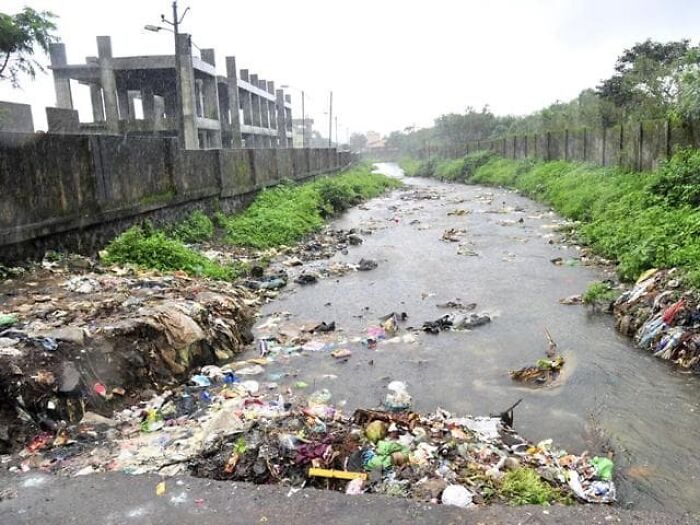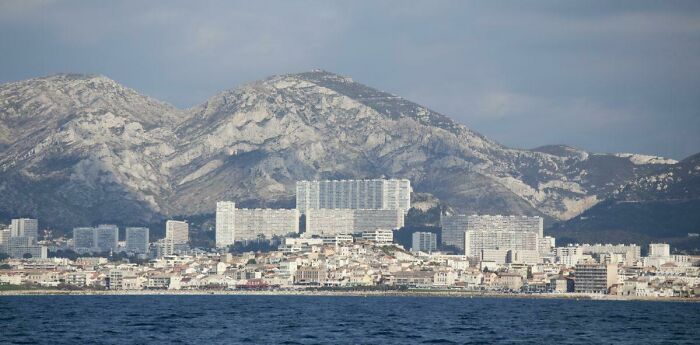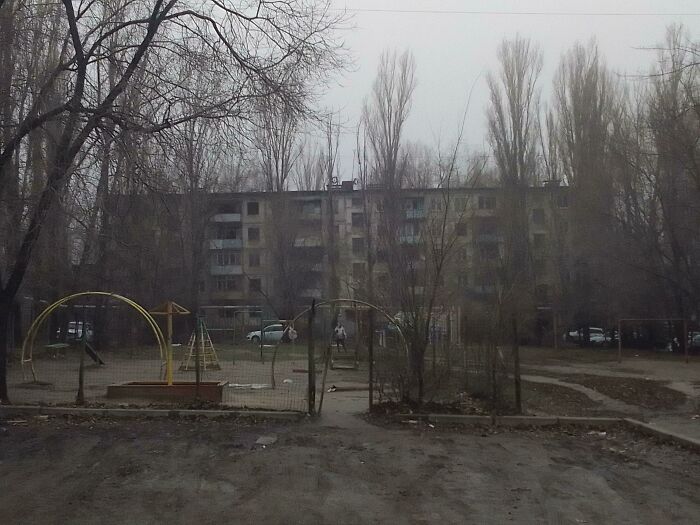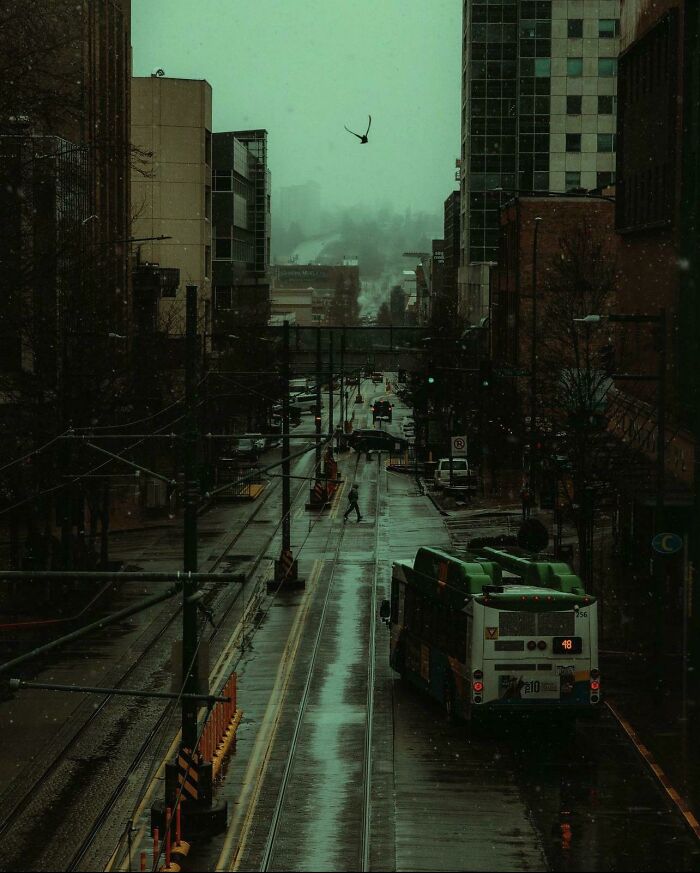When we look at towering skyscrapers, we usually enjoy how majestic they make the skyline look. But every structure casts a shadow.
The subreddit 'Urban Hell' is a place where modern concrete jungles are called out for all the chaos and disarray that they entail.
Created back in 2013, this online community now has 1.2 million members, who are regularly sharing pictures of buildings and cities that suggest we're already living in a dystopia.
Whether it's the dirty slums against the shiny downtown in the background, abandoned stadiums, or packed streets under neon lights, is this really the best we humans can do?
This post may include affiliate links.
Light Pollution From Train Line Over Old Houses In China
That just sucks, except if you have a cardboard box or something thick and solid to cover the windows
Hong Kong, Enough Said
According to Yan Liu, a professor of geographical information science at the University of Queensland, and Rachel Gallagher, a Ph.D. candidate at the same institution, zoning has been the key tool used by urban planners to influence how our cities grow and change for almost a century.
"Contemporary zoning truly developed after the Second World War," the researchers wrote. "A combination of large real estate interests and the emerging field of urban planning created low-density, car-centric suburbs."
Urban plans called for standardized subdivisions and land uses, and engineering of streets and infrastructure.
Balcony Facade Of A Famous Hotel In Thailand
I was confused at what's I'm looking at until I read the title, insane
Gurugram, India
Holy moly, I've never seen that many vehicles on a road before O_o
Satellite View Of New Delhi (A City Of Some 20 Million People)
Urban development was largely characterized by detached houses in residential suburbs, while large road networks separated these suburbs from commercial and industrial areas of the city.
However, in the late 1980s, many cities began to introduce planning mechanisms to restrict outward expansion. Changes in zoning allowed for increased density and a mix of land uses—the aim was to encourage redevelopment of existing urban areas.
Naples, Italy
Caribbean Coast Estate, Hong Kong
Egyptian Times Square, Cairo, Egypt
Istanbul Traffic
Yet, as cities become denser and the traditional suburban "house and garden" is redeveloped, buildings are replacing trees, and settlements become grayer.
Replacing an existing home with a larger house or with several townhouses typically results in all existing vegetation being stripped from the site.
The Other-Side Of Rio De Janeiro
Detroit, Michigan
Not all is lost. Second picture is the Ransom Gillis Mansion. Believe it or not, this one is saved! See what is looks like now. https://en.m.wikipedia.org/wiki/Ransom_Gillis_House
Contrasts
Mumbai Water Pipes With Garbage And Slums, Those Pipes Supply Water To Localities With Apartment Rates Exceeding A Million Dollar For 3bhk In Bandra, Santacruz
Compact city land-use policies and urban forest policies need to work together to ensure that there could be both high-quality built environments and extensive tree cover.
Experts argue that cities urgently need more strategic identification of small and large lots that are suitable for more intensified development, particularly to reduce the need for the widespread low-level consolidation that threatens tree cover.
Once Upon A Time, These Houses Have A Sea View, Now They Have This View
Interestingly enough, there are probably another row of houses behind these ones that were all pissed off when the smaller red-roofed buildings were built too. This is why local government zoning rules need to be in concrete and not influenced by developers throwing huge amounts of money at them.
Hong Kong Apartments
Metro Manila, Philippines
Burlington Beach, Ontario
At the same time, land-use regulation should ensure that both low-yield and higher-density redevelopment maintain the contribution of private land to the urban forest. Existing and new approaches to achieving this outcome need to be considered, whether that's done through local rules, government programs, or incentive schemes.
Small City In China
The interesting thing for me, is that even with all those buildings there is a ton of green in the picture. Far more than you'd get in most cities.
Mansion Under Bay Bridge In San Fransisco, Ca
I guess they didn't want to move when the freeway was being built
Phnom Penh New Gated Community
This looks like something straight out of a game
Merry Christmas Sign On A Blast Furnace At Brazil
Rapid urban consolidation can change urban landscapes significantly over the next few decades, and the right decisions need to be made to ensure we don't end up with more "urban hell," which can be further explored in our previous publications on the subreddit here and here.
Tokyo From Skytree
Tokyo, Japan
Kindergarten In One Of The Settlements Near Vorkuta
Vorkuta, town in Russia. "Vorkuta became one of the most well known Gulags, it gained a reputation of being one of the worst in the Soviet Union. About 2 Million Prisoners had gone to Vorkutlag from 1932 until the closure in 1962, the amount of deaths in the camp were estimated to be 200,000" - Wikipedia
Early Powerline Setups - When Thousands Of Cables Filled The Sky
Brazil
View From My Hotel In Downtown Naples, Italy
Sigh... Parking Lots
A Normal Day In Kowloon 20 Years Ago
State University Of Rio De Janeiro, Brazil
Neon District In The Lahore Walled City
Imagine Using This Picture To Advertise Your City
Did the building go up before or after the freeway though? I can't comment on LA but there are some fairly major highways here that had no homes near them 20 years ago, but now they're building housing estates up to the highway boundaries. If someone chooses to develop the land and people buy the houses you can't blame the highway since it already existed.
Slums In Jakarta, Indonesia
Didn't expect for Jakarta to look like this, I thought it's a great and beautiful country (I even live in Indonesia)
Gary, Indiana
Real Estate Boom In Newtown, India
Mumbai, India In All It’s Glory
Can Anyone Confirm If This Is As Bad As It Seems?
Tarlabaşı, One Of The Poorest Neighborhoods In Istanbul
This would be quite nice if the street were cleaner and cobblestoned.
Man On Pedestrian Bridge Overlooking Traffic In Lagos, Nigeria. (Photo: Akintunde Akinleye)
Can you imagine an emergency vehicle trying to get through
Dystopian Thessaloniki
Houses Combined With The Wall Next To A Freeway. So Depressing
La, Office Tower
I find this kinda cool. Sure it's blocky and grey, but they're trying to make it interesting.
What Happens When We Build For Cars Instead Of People
Government Housing. São Paulo 🇧🇷
This is actually not that bad, just missing plantation and road surface
Dubai
Chişinau
The End Of Post War Dreams. Newcastle, UK
Ok, so I want to comment on this. Newcastle is a developed and beautiful city; yes it has run down areas but that happens. Please look at the city centre and view all the development they are doing. Newcastle transformed the Quayside from Urban Hell In the late 80's and early 90's!
When You Want To Look Whimsical, But Hate The Homeless
Lagos, Nigeria
An Old Church Was Demolished To Make Way For A Real Estate Development Of Apartment Buildings In Shanxi, China
History has no relevance in some parts of the world. In places such as the Middle East there are amazing deserted villages left to collapse as everyone moves into concrete cities with malls and freeways. UK town planners are often bad at thus as well. They turned a town on Cornwall into a concrete modernist hell hole between 1960 and the 1990s. The crime rates have shot up. When are we going to learn that environments impact on behaviours? If sterile functionality is favoured over beauty and nature, you breed vandalism and disconnectedness.
Miari Texas, One Of Few Remaining Red Light Districts Of Seoul, South Korea
Mumbai's Water Filtration Plant Not Cleaned Or Upgraded For Last 42 Years. Finally It Got Cleaned Yesterday
Looks Very Welcoming, Who Wouldn't Want To Shop Here
I used to live in one of the tower blocks near here (it was in the old opening credits for Coronation Street!). As well as serving as a shopping centre, it also served as a bus station. But it wasn’t a nice place to wander round in the early 90s.
The Ship-Breakers, Chittagong, Bangladesh
Partially Collapsed Building, Still Occupied (Cairo Area, Egypt)
Residential Area Near Cheonggyecheon Before Its Redevelopment In 2005, Seoul, South Korea
Cape Coral, Fl
The View From Your 1 Bed/1bath, 800sq Foot, $850k Condo In Oakland, California
Mumbai Roads Are The Perfect Poster Child For Urban Hell. The Existing Small Stretch Of Metro Is The Only Way To Reach Your Destination On Time. The Suburban Trains Are Already Super Crowded And The Passengers Are Forced To Travel In Sub Human Conditions
This Old Prison Can Be Yours. Jail On Sale
Seems like an opportunity for a production company/movie studio. Buy it for use as a prison set in movies.
Buenos Aires, Argentina
Baltimore
Sad to see those actually cute houses in that condition - somewhere else these would be expensive as hell
Armando De Salles Oliveira Stadium, São Paulo
Marseille Banlieue - The Outskirts Of French Cities Are Known For Colossal Housing Structures
Sao Paolo
Oslo’s (Norway) Fanciest Business Looks Like An Industrial Plant In The Middle Of The City
Bike Lane In Street Of Sao Paulo
November
This is silly because you can see it's a nice, green playground in summer. Any place can look depressing in overcast winter weather.
Part Of Downtown Edmonton
An Apartment In Hangzhou, China
Tel Aviv City Centre (Allenby Street). Each Apartment In This Building Cost Around 1.5m$ Btw (Really)
Building In Fort Worth, Texas
Bat Yam, Israel
Sao Paulo Suburbs In 1985
Remember when builders had PRIDE in the architecture of their buildings? We have e buildings in the uk that used to be public toilets that look better than everything that's built today! Think about it, a place to SH!T looked better than places to LIVE and WORK these days!!
Lagos, Nigeria
People Live In The Tiny Gap Between Commercial Buildings And The Official Residence Of Thailand's Prime Minister
Deindustrialized Post Soviet Town
If people actually took pics when it was brighter it wouldn’t look this bad
Brownsville, Pennsylvania 2023. Vibes Of Deindustrialization
A Depressing Bus Stop At Jakarta
Shantytowns Of Seoul, South Korea In 1960s
At&t Long Lines NYC Building (Windowless) I Dig It Most People Despise It
In Cairo City Planners Passed The Level Of Adding More Lanes, Now They Add More Bridges. To The Resident's Surprise, Building Height Limit Codes Don't Apply To Bridges
Seoul Birds
Well if their little lungs can handle the pollution, it can't be too bad..right?
Strange And Ugly House In Slayton, Minnesota
Tacoma, Washington. Beautifully Ugly?
Someone trying to be arty. A quick edit makes it look like this tacoma-64b...1c-png.jpg 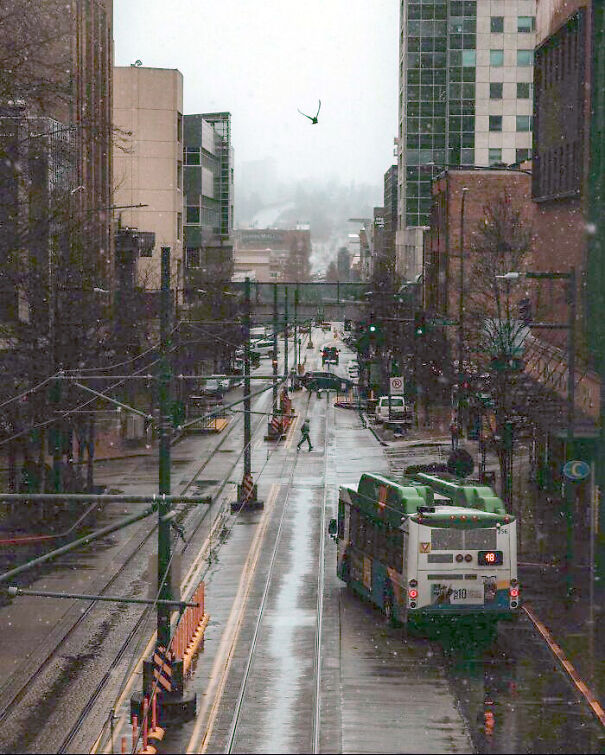
Mumbai , India Population 21million
Mina The City Of Tents, Near The City Of Mecca, Saudi Arabia
Okay, we need to clear this up. Those units are for air conditioning. Also, no one lives here year round, and everything is shut down/turned off when not in use. It is used during the days of Hajj, Islamic pilgrimage to Makkah, where the pilgrims must spend a certain amount of nights here in Mina as part of the pilgrimage rituals. Millions of pilgrims come each year, with the numbers only now starting to return to prepandemic figures. All those people need a place to stay in the boundaries of the Mina area, that’s the reason for tight configuration.
Photos I Took In NYC Yesterday
Concrete Mess In New England
I understand the point this article was trying to make, but I feel like a lot of these photos were deceptively framed. Some were taken in the middle of winter to make the trees look dead and the grass stunted. Some used light filters to make everything look more dirty and gray than it probably is, and some of them were shot at weird angles that give a skewed perspective while excluding the background that might give context. The brown skies in the photos of NYC are not from industrial pollution, but from smoke from the Canadian wildfires drifting south. Not saying there is not a lot of ugliness in the world, but there is great beauty too, and if all you look for is the bad, then of course you are going to be depressed about it.
Well this was a depressing way to start my day. Surprised Karachi isn’t here, it’s veeeeery similar to Mumbai.
Just looked up Karachi. Yeah, the traffic is unbelievable in some of the shots.
Load More Replies...The next time BP posts an article bashing US suburban living, I'll remember this list.
I had the same thought as I was reading these. Only thing that surprised me was how few of these sites are actually in the US. Not like BP to pass up a chance to do some zero-perspective America bashing!
Load More Replies...I understand the point this article was trying to make, but I feel like a lot of these photos were deceptively framed. Some were taken in the middle of winter to make the trees look dead and the grass stunted. Some used light filters to make everything look more dirty and gray than it probably is, and some of them were shot at weird angles that give a skewed perspective while excluding the background that might give context. The brown skies in the photos of NYC are not from industrial pollution, but from smoke from the Canadian wildfires drifting south. Not saying there is not a lot of ugliness in the world, but there is great beauty too, and if all you look for is the bad, then of course you are going to be depressed about it.
Well this was a depressing way to start my day. Surprised Karachi isn’t here, it’s veeeeery similar to Mumbai.
Just looked up Karachi. Yeah, the traffic is unbelievable in some of the shots.
Load More Replies...The next time BP posts an article bashing US suburban living, I'll remember this list.
I had the same thought as I was reading these. Only thing that surprised me was how few of these sites are actually in the US. Not like BP to pass up a chance to do some zero-perspective America bashing!
Load More Replies...
 Dark Mode
Dark Mode 

 No fees, cancel anytime
No fees, cancel anytime 





























